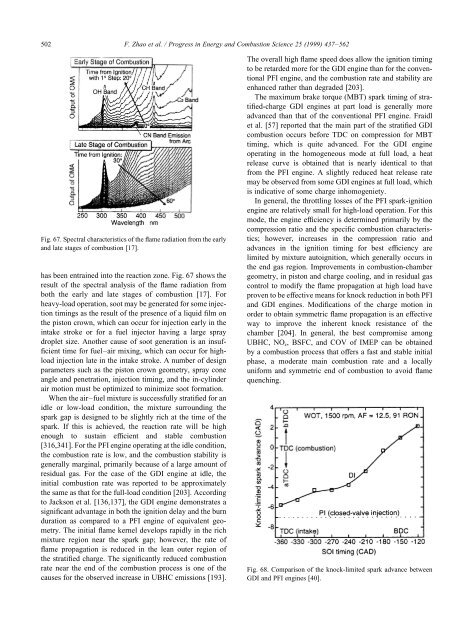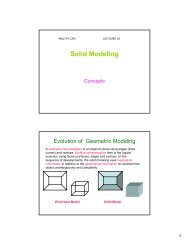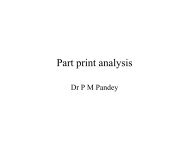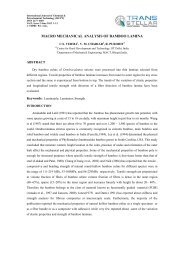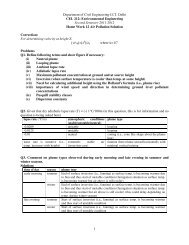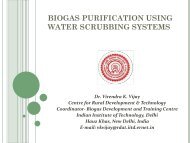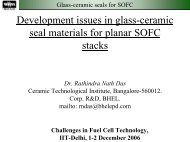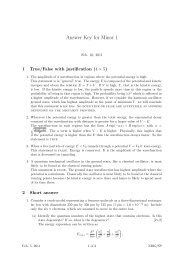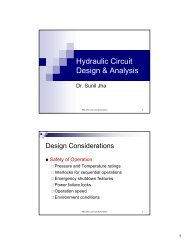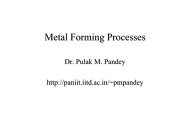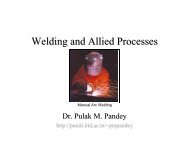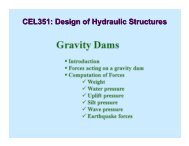Automotive spark-ignited direct-injection gasoline engines
Automotive spark-ignited direct-injection gasoline engines
Automotive spark-ignited direct-injection gasoline engines
Create successful ePaper yourself
Turn your PDF publications into a flip-book with our unique Google optimized e-Paper software.
502<br />
F. Zhao et al. / Progress in Energy and Combustion Science 25 (1999) 437–562<br />
Fig. 67. Spectral characteristics of the flame radiation from the early<br />
and late stages of combustion [17].<br />
has been entrained into the reaction zone. Fig. 67 shows the<br />
result of the spectral analysis of the flame radiation from<br />
both the early and late stages of combustion [17]. For<br />
heavy-load operation, soot may be generated for some <strong>injection</strong><br />
timings as the result of the presence of a liquid film on<br />
the piston crown, which can occur for <strong>injection</strong> early in the<br />
intake stroke or for a fuel injector having a large spray<br />
droplet size. Another cause of soot generation is an insufficient<br />
time for fuel–air mixing, which can occur for highload<br />
<strong>injection</strong> late in the intake stroke. A number of design<br />
parameters such as the piston crown geometry, spray cone<br />
angle and penetration, <strong>injection</strong> timing, and the in-cylinder<br />
air motion must be optimized to minimize soot formation.<br />
When the air–fuel mixture is successfully stratified for an<br />
idle or low-load condition, the mixture surrounding the<br />
<strong>spark</strong> gap is designed to be slightly rich at the time of the<br />
<strong>spark</strong>. If this is achieved, the reaction rate will be high<br />
enough to sustain efficient and stable combustion<br />
[316,341]. For the PFI engine operating at the idle condition,<br />
the combustion rate is low, and the combustion stability is<br />
generally marginal, primarily because of a large amount of<br />
residual gas. For the case of the GDI engine at idle, the<br />
initial combustion rate was reported to be approximately<br />
the same as that for the full-load condition [203]. According<br />
to Jackson et al. [136,137], the GDI engine demonstrates a<br />
significant advantage in both the ignition delay and the burn<br />
duration as compared to a PFI engine of equivalent geometry.<br />
The initial flame kernel develops rapidly in the rich<br />
mixture region near the <strong>spark</strong> gap; however, the rate of<br />
flame propagation is reduced in the lean outer region of<br />
the stratified charge. The significantly reduced combustion<br />
rate near the end of the combustion process is one of the<br />
causes for the observed increase in UBHC emissions [193].<br />
The overall high flame speed does allow the ignition timing<br />
to be retarded more for the GDI engine than for the conventional<br />
PFI engine, and the combustion rate and stability are<br />
enhanced rather than degraded [203].<br />
The maximum brake torque (MBT) <strong>spark</strong> timing of stratified-charge<br />
GDI <strong>engines</strong> at part load is generally more<br />
advanced than that of the conventional PFI engine. Fraidl<br />
et al. [57] reported that the main part of the stratified GDI<br />
combustion occurs before TDC on compression for MBT<br />
timing, which is quite advanced. For the GDI engine<br />
operating in the homogeneous mode at full load, a heat<br />
release curve is obtained that is nearly identical to that<br />
from the PFI engine. A slightly reduced heat release rate<br />
may be observed from some GDI <strong>engines</strong> at full load, which<br />
is indicative of some charge inhomogeniety.<br />
In general, the throttling losses of the PFI <strong>spark</strong>-ignition<br />
engine are relatively small for high-load operation. For this<br />
mode, the engine efficiency is determined primarily by the<br />
compression ratio and the specific combustion characteristics;<br />
however, increases in the compression ratio and<br />
advances in the ignition timing for best efficiency are<br />
limited by mixture autoignition, which generally occurs in<br />
the end gas region. Improvements in combustion-chamber<br />
geometry, in piston and charge cooling, and in residual gas<br />
control to modify the flame propagation at high load have<br />
proven to be effective means for knock reduction in both PFI<br />
and GDI <strong>engines</strong>. Modifications of the charge motion in<br />
order to obtain symmetric flame propagation is an effective<br />
way to improve the inherent knock resistance of the<br />
chamber [204]. In general, the best compromise among<br />
UBHC, NOx, BSFC, and COV of IMEP can be obtained<br />
by a combustion process that offers a fast and stable initial<br />
phase, a moderate main combustion rate and a locally<br />
uniform and symmetric end of combustion to avoid flame<br />
quenching.<br />
Fig. 68. Comparison of the knock-limited <strong>spark</strong> advance between<br />
GDI and PFI <strong>engines</strong> [40].


